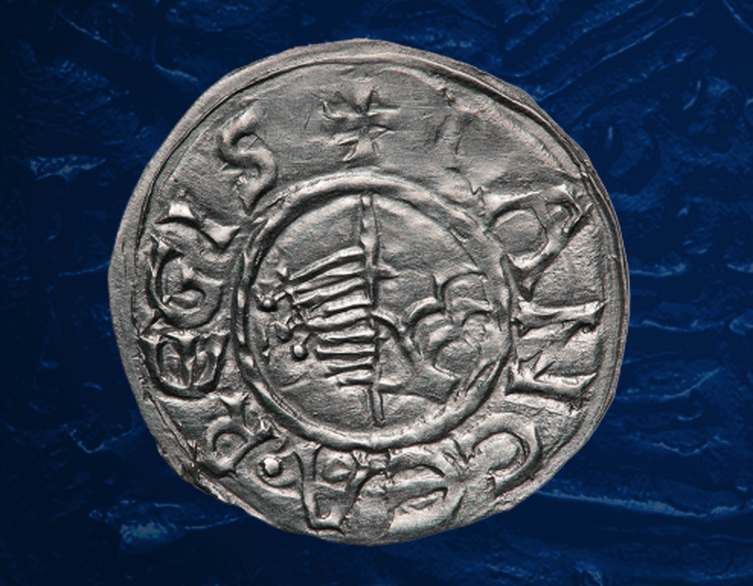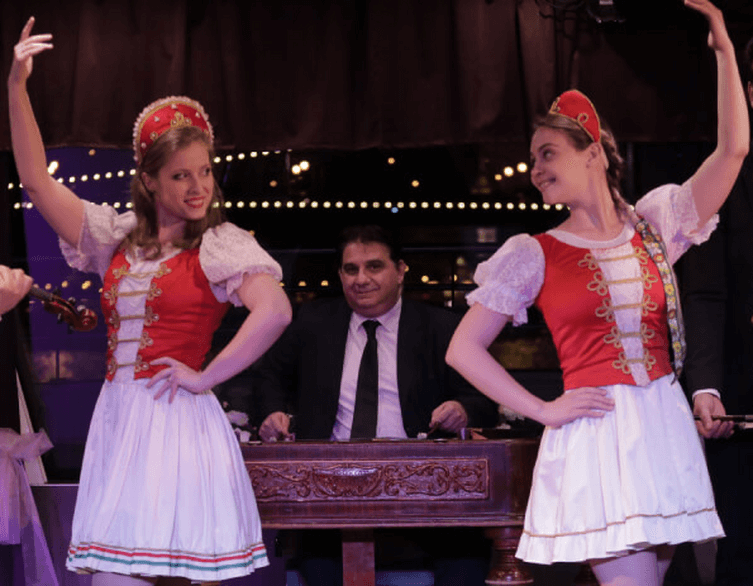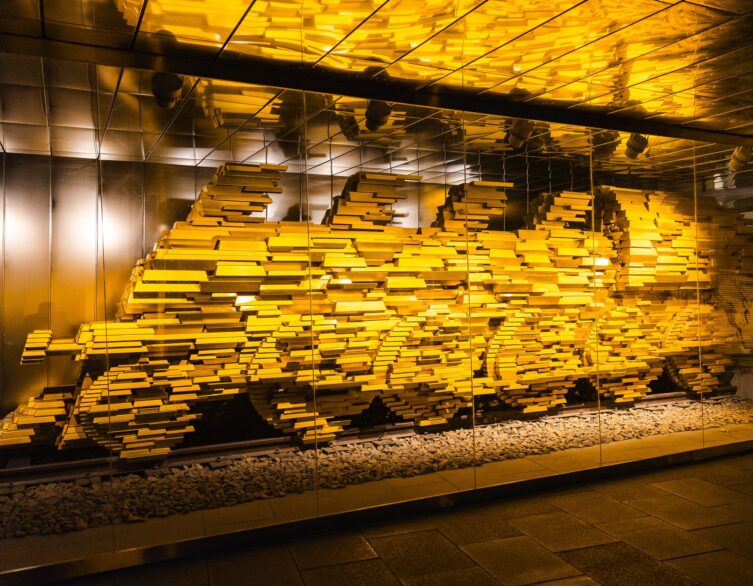The Sacred Coins of St. Stephen: Hungary’s First Royal Currency

When you visit Budapest today and explore its rich numismatic heritage, you’re uncovering one of medieval Europe’s most fascinating monetary stories. Hidden within the collections of the Hungarian National Bank’s Money Museum lies a treasure that revolutionized our understanding of Hungary’s founding – the legendary “Lancea Regis” coins of St. Stephen, the first King of Hungary.
A Discovery That Changed History
The story of these remarkable coins begins not in a royal treasury, but in the muddy earth of a small Hungarian village. In 1968, construction workers in Nagyharsány were going about their routine excavation when their shovels struck something extraordinary – a clay pot filled with gleaming silver coins that had been hidden for nearly a thousand years.
József Schmieder, the mine supervisor overseeing the work, immediately recognized the significance of the find and contacted the Janus Pannonius Museum in Pécs. When archaeologist Attila Kiss arrived at the scene, he knew instantly that this was no ordinary discovery. Among the medieval coins were pieces that would completely reshape historians’ understanding of when Hungary first began minting its own royal currency.
The coins bore the mysterious inscription “LANCEA REGIS” – “The King’s Lance” – along with an image that would prove to be deeply symbolic: a hand emerging from clouds, grasping a ceremonial lance. On the reverse side was the inscription “REGIA CIVITAS” meaning “Royal City,” surrounding what appeared to be a stylized church or palace building.
From Forgery to National Treasure
What makes this discovery even more remarkable is that these very coins had previously been dismissed by scholars as modern forgeries. Before the Nagyharsány find, when similar pieces had surfaced in the antiquities market, numismatists had been skeptical of their authenticity. Some had even suggested they might be Bavarian imitations. The systematic excavation of multiple coins from a single, datable archaeological context changed everything.
István Gedai, the numismatist at the Hungarian National Museum who studied these coins extensively, was able to definitively prove their Hungarian origin and date them to the early 11th century – precisely the reign of St. Stephen. This meant that what historians had long considered to be Stephen’s first coins, bearing the inscription “STEPHANUS REX,” were actually his second issue. The Lancea Regis coins represented something far more significant – they were likely struck to commemorate Stephen’s coronation itself.
Best deals of Budapest
The Symbolism of Divine Authority
The imagery on these coins wasn’t chosen randomly. Every element carried profound political and religious meaning that would have been immediately understood by Stephen’s contemporaries. The lance represented royal authority and divine sanction – a concept that was central to medieval kingship.
Historical sources tell us that Stephen’s father, Prince Géza, had received a ceremonial lance from Holy Roman Emperor Otto III as a symbol of sovereignty. This wasn’t merely decorative; it represented the emperor’s acknowledgment of Géza’s right to rule his territories with considerable independence. When Stephen inherited this lance, he also inherited the legitimacy it represented.
The hand emerging from clouds on the coin’s design represents the hand of God, symbolizing that royal power comes from divine source. This wasn’t just artistic flourish – it was a bold political statement. Stephen was declaring that his authority came not just from earthly emperors or tribal tradition, but directly from heaven itself.
The Journey of a Single Coin
The fate of these precious coins after their discovery reads like an adventure novel. Despite archaeologists’ best efforts to recover all the coins from the Nagyharsány site, several pieces scattered among the construction workers who found them. This led to one of numismatics’ most intriguing treasure hunts.
In 1969, Ferenc Tóth, a coin collector from Pécs, was sitting in a café near the Nagyharsány mine when conversation revealed his interest in old coins. Local patrons, unaware of the historical significance of what they possessed, showed him several ancient pieces they had acquired. Tóth immediately recognized five coins that likely belonged to the original hoard, including four Lancea Regis denarii and one imitation of a coin from German King Henry II.
Through a series of exchanges and sales that spanned decades, these coins found their way into various collections. Two were traded to István Gedai for his research. One disappeared into a private collection and remains lost to this day – its owner took the secret of its location to his grave in 2007. The fourth coin followed the most circuitous route to fame.
On July 8, 1974, the Hungarian National Bank purchased this final Lancea Regis coin from Ferenc Tóth. Given the catalog number 4611.2, it became part of the bank’s official collection. Today, this very coin is displayed in the Money Museum’s second exhibition space, where visitors can see this tangible link to Hungary’s founding moment.
Technical Mastery in Medieval Minting
The craftsmanship of these coins reveals the sophisticated level of monetary production that Stephen’s kingdom had achieved by the year 1000. The lettering on the Lancea Regis coins shows striking parallels to inscriptions found on a cross that Stephen’s wife, Queen Gisela, had made for her mother’s grave. This suggests that the same workshops and artisans were working on both royal regalia and currency, indicating a centralized and well-organized royal mint.
The reverse side’s church design shows Carolingian influence – the architectural style of the great Frankish empire that had dominated Western Europe in the 8th and 9th centuries. However, closer examination reveals distinctly Hungarian decorative elements, particularly palmette ornaments characteristic of Magyar goldsmithing from the conquest period. The closest artistic parallels to this style can be found in burial ornaments from the conquest-era cemetery at Kistokaj.
The inscription “RECI” on the reverse is a fascinating linguistic detail – it’s an abbreviation of “REGIA CIVITAS,” but its form deliberately echoes “Regina Civitas,” the Latin name for Regensburg. This wasn’t coincidental; it was Stephen’s way of asserting that his new kingdom could match the grandest cities of the German Empire in importance and legitimacy.
A King’s Political Statement
These coins represent far more than monetary instruments – they’re political manifestos cast in silver. By the year 1000, the right to mint coins was one of the most jealously guarded privileges of medieval sovereignty. For Stephen to issue his own currency was a bold declaration of independence from both the Holy Roman Empire and the Byzantine Empire, the two great powers that flanked his emerging kingdom.
The timing was crucial. Stephen’s coronation occurred during a period when the Ottoman succession was uncertain, and various European powers were jockeying for influence in Central Europe. By immediately issuing coins bearing symbols of divine authority and royal independence, Stephen was announcing to the medieval world that Hungary had arrived as a sovereign Christian kingdom.
The widespread acceptance of these coins is evidenced by their discovery not just in Hungary, but throughout Central Europe. Archaeological finds have revealed Stephen’s denarii in Scandinavia, where they were apparently valued enough to inspire local imitations. This international circulation demonstrates that Hungary’s new royal currency quickly gained recognition and trust across medieval trade networks.
Modern Research and Conservation
Today, the study of Stephen’s coins continues to yield new insights into medieval Hungarian society and economy. Advanced analytical techniques allow modern researchers to determine not just the silver content and purity of these ancient pieces, but also to trace the likely sources of the metal used in their production.
The conservation of these thousand-year-old artifacts presents ongoing challenges. The coin displayed in the Money Museum has been carefully treated to prevent further corrosion while preserving its historical details. Special lighting and climate control ensure that future generations of visitors will be able to see this remarkable piece of Hungarian heritage.
A Legacy Cast in Silver
For tourists visiting Budapest today, seeing Stephen’s Lancea Regis coin in the Money Museum offers a uniquely intimate encounter with the moment when Hungary became a European kingdom. This small silver disc, weighing just a few grams, represents one of the most significant political transformations in European history – the peaceful integration of a nomadic people into the Christian monarchical system that defined medieval Europe.
The coin also tells a very human story about the challenges of preservation and the role of chance in historical discovery. From its creation in a royal mint a thousand years ago, through its burial during some long-forgotten crisis, to its accidental rediscovery by construction workers and its eventual journey to a museum display case, this coin has survived wars, invasions, political upheavals, and the simple passage of time.
When you stand before this coin in the Money Museum, you’re not just looking at an ancient artifact – you’re witnessing the physical embodiment of Stephen’s vision for Hungary. Every detail, from the divine hand holding the lance to the abbreviated Latin inscriptions, represents choices made by a medieval king who understood that true power requires not just military might, but the ability to communicate legitimacy and authority to both subjects and foreign powers.
This tiny piece of silver, no larger than a modern coin, contains within it the entire story of how Hungary became Hungary – and how one visionary ruler used every tool at his disposal, including the symbolism of currency, to create a kingdom that would endure for centuries.
Related news
Related attractions




















